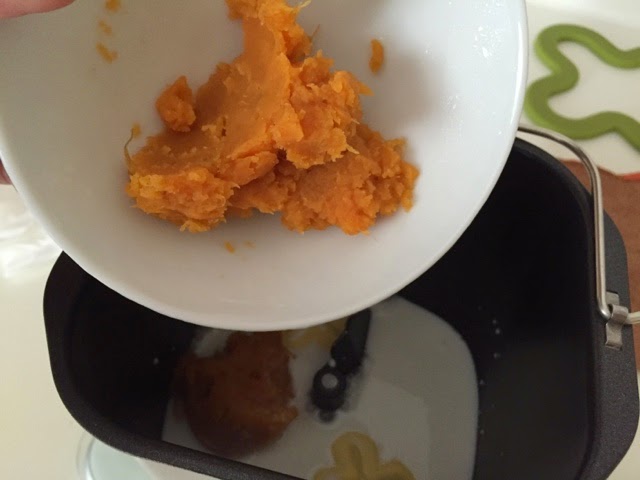If you like soft and juicy pork ribs which slide off the bone easily, try this easy to manage recipe ^^
Yield: 8 pork ribs for 4 persons
Ingredients
650g prime pork ribs, room temperature
排骨,室温
Marinade
2 slice ginger 姜片
2 cloves garlic, crushed with skin on 蒜,带皮
1 tbsp raw sugar 黄糖
1 tsp dark brown sugar 黑糖
2 tbsp oyster sauce 蚝油
1 tbsp rice wine 花雕酒
1/2 tsp low salt light soya sauce 低盐酱清
1/8 tsp dark soya sauce 酱油
2 tsp hoisin sauce 海鲜酱
100ml water 水
2 tbsp vinegar 醋
1 tbsp tomato paste 番茄酱
You can adjust the quantity according to your taste.
Sauce
1 tbsp rock sugar 冰糖
1 tbsp raw sugar 黄糖
Salt to taste 盐
1/2 tsp potato starch mixed with 1 tbsp water 太白粉加水勾芡
Direction
1. Parboil ribs by pouring boiling water into a bowl of prime ribs. Keep the ribs under water for about 5 to 8 minutes.
2. Pour the marinade over the ribs and mix using your hand. Transfer the ribs and the marinade to a porcelain or glass bowl. Cover and let the ingredients marinate for at least 1 hour.
If you are using a stainless steel bowl to hold, keep the vinegar and tomato paste till the end of the marinating session then add in.
3. Pour the ingredients into the rice cooker and arrange the ribs in a single layer.
Start the "rice cooking" function.
For my Philips Avance Rice Cooker, I chose the 'Soup" function, and set the cooking time for 1 hour.
4. Give the ingredients a few stirs, at least twice, during the cooking process to ensure even cooking and coating.
I stir the ingredients after the first 20 minutes, then every 15 minutes.
5. When the cooking process is over, you will hear the rice cooker "beep". The rice cooker will automatically switch to "Keep Warm" function. Allow the "Keep Warm" function to run for 1/2 to 1 hour to simmer the ribs to soft.
6. When the time is up, transfer all the pork ribs out to a bowl. Cover the ribs to prevent them from drying up.
7. Add in the rock sugar, raw sugar and some salt , and start the "Ultraquick" cooking function to partially dry up the remaining sauce in the rice cooker to about 1/2.
Cook with the lid open to allow the liquid to evaporate away.
Adding salt and sugar at this stage instead of during the marinating period, prevent the ribs from drying up and harden during the cooking.
8. When the sauce starts to boil and has been reduced, pour in the starch water to thicken the sauce. Stir regularly to prevent the starch from forming lumps.
9. After the sauce has been thickened, stop the cooking process and return the pork ribs to the rice cooker pot.
Coat the ribs evenly with the sauce.
10. Allow the ribs to cool down slightly before serving with warm rice :)
For normal rice cooker
Perform the step 1 and 2 as above.
3) Start the rice cooking process. When the ingredients starts to boil, manually switch to "Keep Warm" function. Let the ingredients keep warm for about 1 hour to 1.5 hours.
4) Remove the pork ribs from the pot and add in raw sugar, rock sugar and salt. Start the "Rice Cooking" function again.
5) When the sauce starts to boil and reduce to about 1/2 its original quantity, stir in the starch water. After the sauce has thickened, turn off the rice cooking process and return the ribs to the pot. Allow the ribs to coat the sauce evenly.
6) Let the ribs cool down slightly before serving with warm rice :)








































































